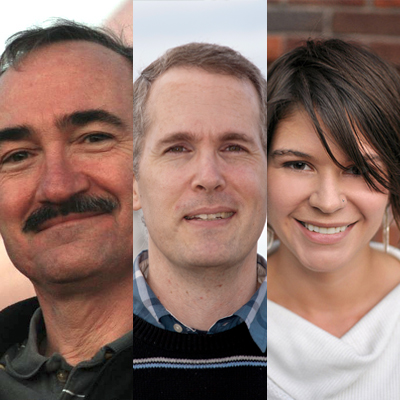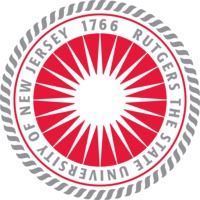Partnering with South Africa to train young scientists in astronomical research using world-class facilities
Humanity has discovered a great deal about the vast Universe in which we live and its mysterious origins, but there are many milestones yet to reach. The astronomical revolution launched by Copernicus has now reached a level of detailed understanding that allows us to ask ever more sophisticated questions. Drs. Jack Hughes (PI), Andrew Baker, Alyson Brooks, and their colleagues in the Department of Physics and Astronomy at Rutgers University are advancing astronomical research in a variety of areas (e.g., the formation and evolution of galaxies, and the properties of dark matter and dark energy), while educating young scientists determined to understand and explain the wonders of the universe. Through partnerships with the rapidly developing research community in South Africa, the Rutgers faculty have added a new international dimension to their pursuit of knowledge and their training of students.
In 1994, the new administration of Nelson Mandela identified astronomy as one of a handful of scientific disciplines holding the greatest potential for the country, capable of strengthening human capital and technical infrastructure. Researchers at Rutgers University have since built multiple, close ties with the South African astronomical community, through involvement in world-class facilities like SALT and MeerKAT. As most of these contacts have been strictly at the faculty level, however, Drs. Hughes, Baker, and Brooks hope to support a vigorous, extensive, two-way exchange of students at the graduate level. With adequate funding, the collaborators will not only advance their cutting-edge astronomical research that encompasses both theory and observation at optical and radio wavelengths, but also support efforts to remedy past inequities of educational opportunity in South Africa and inspire the next generation of students in both countries to pursue education in technical fields.
Starting from a strong basic foundation in astronomical research, South Africa over the past 15 years has been developing two world-class astronomical research facilities aimed at catapulting it into the top ranks of nations pursuing astronomy. Current research programs at Rutgers include projects using both facilities:
- The Southern African Large Telescope (SALT), the largest single-aperture optical telescope in the southern hemisphere, observes everything from exploding stars to distant clusters of galaxies to the internal motions of galaxies that reveal the properties of dark matter. Currently, Dr. Hughes is actively using SALT for observations of galaxy clusters, which are the largest gravitationally-organized systems in the Universe. Clusters grow with the passage of cosmic time, and thus an accurate census of the number of clusters throughout the Universe as a function of their mass will help measure the growth rate of structure in the Universe, providing insight into the nature of the mysterious "dark energy" that is the source of cosmic acceleration.
- MeerKAT is an array of 64 radio telescopes that, when completed in 2017, will be the most sensitive radio telescope in the southern hemisphere for the study of neutral atomic hydrogen gas in galaxies. Dr. Baker jointly leads one of the two highest-priority MeerKAT large surveys (Looking At the Distant Universe with the MeerKAT Array, or LADUMA), which will study neutral hydrogen over the last nine billion years of cosmic time. Neutral hydrogen can be used to trace the history of a galaxy's growth and represents a reservoir for the formation of its future stars, giving it a key role in the overall process of galaxy evolution whose study is a central theme of modern observational and theoretical astronomy.
- Supercomputer simulations are an important theoretical tool for interpreting observations of cosmic structure, including galaxies. Dr. Brooks uses state-of-the-art numerical simulations to study galaxy formation from a theoretical perspective, and the evolution and internal motions of galaxies with time. These simulations can both interpret observations and make new predictions for observational tests, yielding a synergistic relationship with the observational programs undertaken by Drs. Hughes and Baker.
Bio
Dr. Jack Hughes, the Principal Investigator of this initiative, became a researcher in order to expand human knowledge. As a child he read a lot, especially regarding astronomy, and was captivated by the space program. This was during the 60's when NASA first sent probes to explore the solar system and send back the first close-up pictures of the Moon and planets. In high school and college, he realized that he had an aptitude for math and science. Later in graduate school, he experienced an "ah-ha" moment that led to one of his first publications, and he still remembers when and where: it was early one evening while waiting with his wife for their ballroom dancing lesson when the key insight for that study came to him. That was in 1983, and in the years since he has experienced similar moments from time to time. More generally as he reflects back on the expansion of knowledge in the field of astronomy at large since his days as a graduate student, Dr. Hughes takes some measure of pride in having been part of it. This is also tied up with the wonder he feels about the ability of humanity to conceive of and understand the workings of the Universe from the Big Bang to the nature of stars. Dr. Hughes fully appreciates the essential mystery and miracle of the comprehensibility of the world we experience (to paraphrase Einstein), and works to pass on the legacy to young scientists today.
http://http://www.physics.rutgers.edu/~jackph
Dr. Andrew Baker was also drawn to astronomy as a child by NASA missions to other planets, specifically the encounters of Voyager 1 and 2 with Jupiter and Saturn. As he took math, physics, and computer science classes in high school and college, he developed the base of knowledge he needed to make himself useful in a research context, and spent several summers working on small research projects in surface physics and astronomy. While in graduate school, he fell in love with the use of radio telescopes to study the interstellar gas and dust in galaxies -- both the techniques and the subjects of this sort of research were fascinating -- and that has been the focus of his work ever since. Now as a university faculty member, Dr. Baker feels that his role as a researcher is not only to produce new discoveries but also to produce (i.e., educate) undergraduate and graduate students who are well-prepared to proceed on to the next stages of their careers as young scientists.
http://www.physics.rutgers.edu/~ajbaker/
At eight years old, Dr. Alyson Brooks decided she wanted to be an astronomer. Each summer, at her family reunion campout, aunts, uncles, cousins, and grandparents would turn to her to ask questions about constellations or planets. Despite her enthusiasm for space and the unknowns contained within it, as she grew older she questioned whether a career in the sciences would satisfy her.
Therefore, as a college freshmen, Dr. Brooks enrolled as an English major having decided to pursue other interests. Despite her full course load, she also enrolled in an astronomy class during her first semester. Dr. Brooks was fortunate that at her small undergraduate university she was able to discover a young, intelligent, woman astronomer who immediately became her role model. Shortly after, Dr. Brooks changed her major to physics with a minor in astronomy and began working on real astronomy projects. From then on, she was hooked.
When admitted to graduate school, Dr. Brooks expected to be an observational astronomer. However, after a few unexpected project assignments, she learned that she had a passion for theory. Since her early career in astronomy, Dr. Brooks has remained a theorist and enjoys working on projects that look at the world in a new or original way.
Aside from research, Dr. Brooks spends her additional time with her young daughter, exercising, and indulging her passion for animated films.


